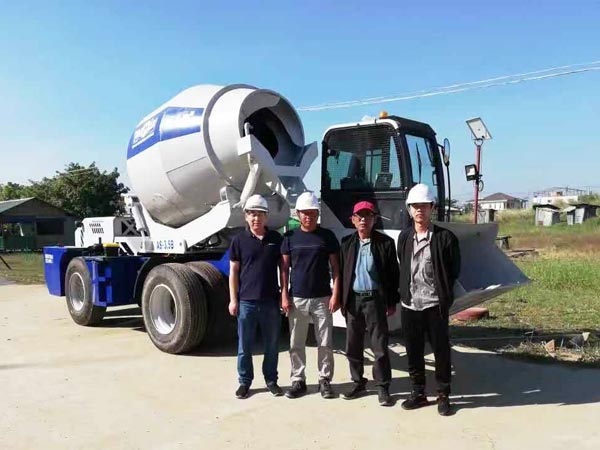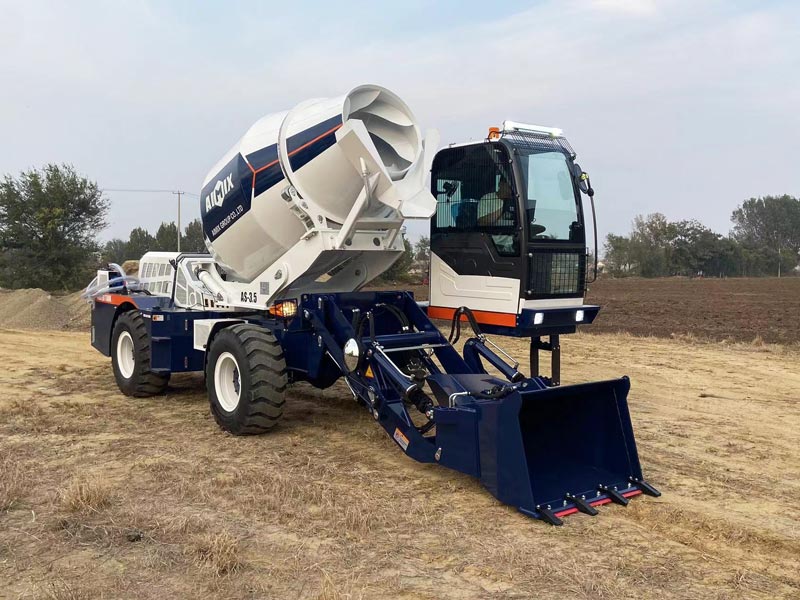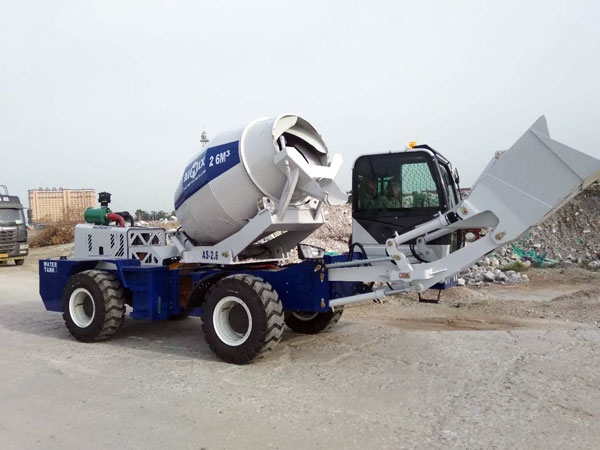Choosing the correct concrete mixer capacity saves time and money. The wrong size leads to wasted materials or delayed work. This guide helps you calculate the ideal mixer size for any project.
Whether you need a self-loading concrete mixer, mobile concrete mixer, portable concrete mixer, or hydraulic concrete mixer, capacity matters. Let’s break down the selection process step by step.

Why Mixer Capacity Matters
Concrete mixers come in various sizes, from small 1-cubic-yard models to large 10-cubic-yard machines. A properly sized mixer matches your project’s concrete demands.
Too small means constant refilling slows progress. Too large wastes fuel and increases costs unnecessarily. The right capacity ensures efficient concrete production.
Different mixer types serve different needs. Portable concrete mixers for sale work for small jobs, while self-loading models handle larger continuous pours.
Key Factors Affecting Capacity Needs
1. Project Volume
Calculate total concrete required for the entire project. Divide this by work hours to determine hourly output needs.
2. Pouring Speed
Some applications need continuous concrete supply. Others allow for batch mixing with breaks between pours.
3. Site Conditions
Tight spaces may limit mixer size. Mobile concrete mixers offer flexibility for constrained areas.
4. Mixer Type
Hydraulic concrete mixers often have higher capacities than electric models. Consider power source limitations too.
Step-by-Step Capacity Calculation
1. Estimate Total Concrete Volume
Measure length × width × depth for each concrete element. Add 10% extra for spillage and errors.
2. Determine Working Time
Divide total volume by available work hours. This gives required hourly output.
3. Consider Mixer Cycle Time
Account for:
-
Loading time (faster in self-loading concrete mixers)
-
Mixing time (typically 3-5 minutes)
-
Pouring time
-
Cleaning time

4. Calculate Batch Requirements
Divide hourly output by batch size. This shows how many batches you’ll need per hour.
5. Select Appropriate Mixer
Match calculations to standard mixer sizes:
-
Small projects: 1-3 cubic yards (portable concrete mixer)
-
Medium projects: 4-6 cubic yards (mobile concrete mixer)
-
Large projects: 7+ cubic yards (hydraulic concrete mixer or self-loading models)
Special Considerations by Mixer Type
Self-Loading Concrete Mixers
These automate material handling, increasing effective capacity. They’re ideal for projects needing continuous concrete supply.
Mobile Concrete Mixers
Great for projects requiring concrete delivery. Calculate capacity based on transport time between plant and site.
Portable Concrete Mixers
Best for small, intermittent pours. Their compact size suits residential repairs or decorative work.
Hydraulic Concrete Mixers
Offer powerful mixing for tough jobs. Their capacities typically range 3-8 cubic yards.
Common Capacity Calculation Mistakes
1. Ignoring Setup Time
Factor in time to position and prepare the mixer, especially for mobile concrete mixers.
2. Overlooking Material Availability
Ensure your aggregate and cement supply can keep up with mixer capacity.
3. Neglecting Site Access
Large mixers need proper access roads. Measure gates and pathways before choosing.
4. Forgetting Weather Factors
Cold weather may require longer mixing times, reducing effective capacity.

Capacity vs. Efficiency: Finding Balance
Bigger isn’t always better. Consider:
-
Fuel efficiency drops with oversized mixers
-
Labor costs may increase with multiple small mixers
-
Hydraulic concrete mixer consumes more power but mix faster
The sweet spot matches your hourly concrete needs without excessive overhead.
Real Example Calculations
Small Patio Project
-
Volume: 2 cubic yards
-
Work time: 4 hours
-
Needed output: 0.5 cubic yards/hour
-
Best choice: 1-cubic-yard portable concrete mixer
Commercial Slab
-
Volume: 50 cubic yards
-
Work time: 8 hours
-
Needed output: 6.25 cubic yards/hour
-
Best choice: 7-cubic-yard self-loading concrete mixer
When to Consider Multiple Mixers
For very large projects:
-
Use two mobile concrete mixers instead of one huge unit
-
Provides backup if one breaks down
-
Allows different mix designs simultaneously
Conclusion
Calculating concrete mixer capacity requires careful planning. Consider project size, work timeline, and mixer type. Self-loading concrete mixers, mobile concrete mixers, portable concrete mixers, and hydraulic concrete mixers each serve different needs.
Proper sizing prevents wasted resources and keeps projects on schedule. Measure twice, calculate once, and choose the mixer that matches your exact requirements.
The right capacity decision improves efficiency, reduces costs, and ensures quality results every time. Use this guide to select the perfect concrete mixer for your next project.